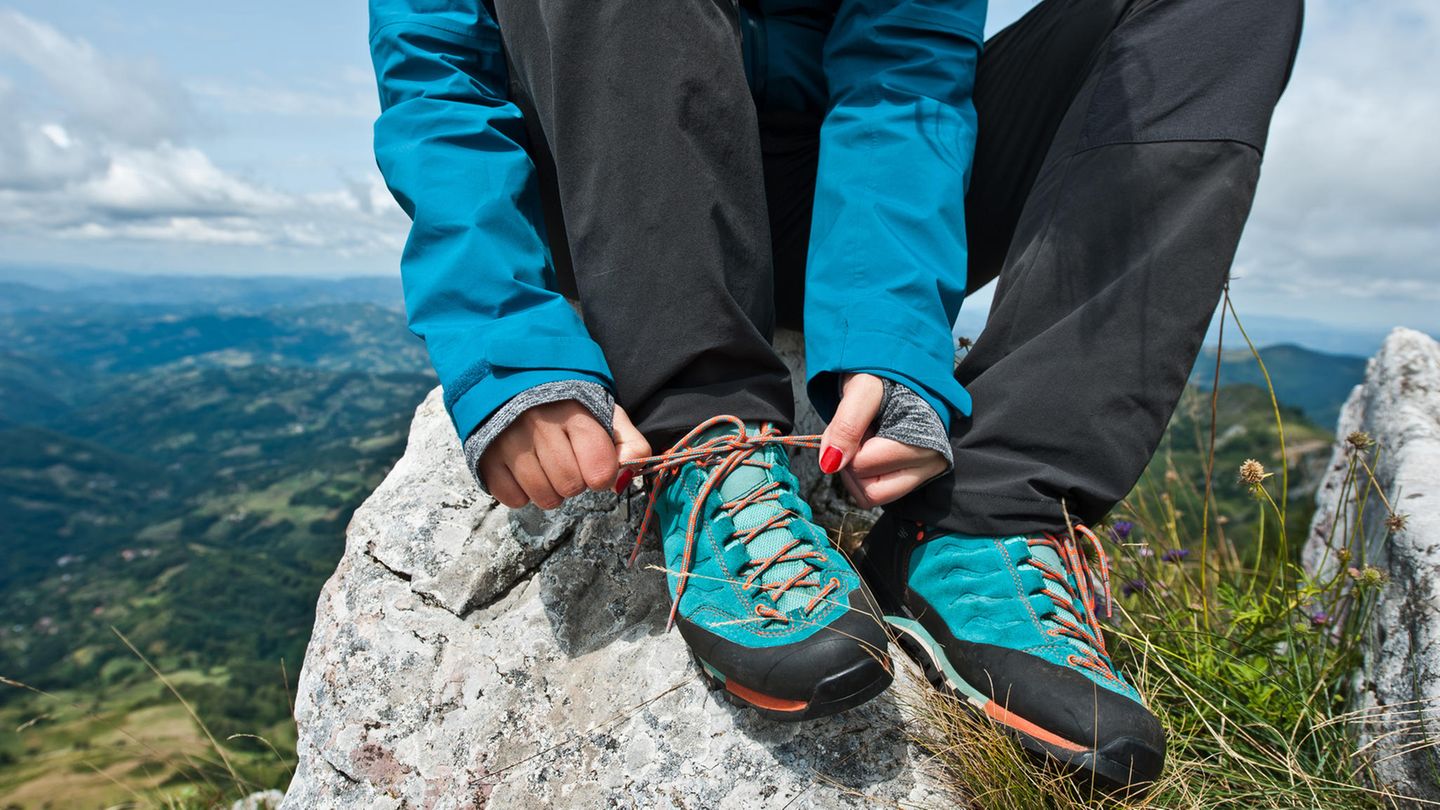As the name suggests, lightweight hiking boots weigh less. This is made possible by their special design, which focuses on comfort and flexibility. Nevertheless, the easy processing is not suitable for every hike.
Classic hiking shoes are characterized by a high shaft, a thick sole and robust materials. This makes them particularly durable, and the solid treads also protect your feet from damage to your health when ascending and descending. They are therefore always the better choice for demanding tours in the mountains. However, if you just want to take a long walk in the forest or go for a short walk with your dog on uneven terrain, light hiking boots are usually sufficient. But what exactly does the term actually mean? And what advantages and disadvantages do the models offer?
This is what distinguishes lightweight hiking shoes
So-called are reminiscent (at least visually) of sneakers, as they are similarly light and low. But in contrast to ordinary sneakers, the ankle-deep shoes offer more support when hiking. And also offer more protection against dirt and moisture. In addition, due to their construction, the shoes have a flexible sole, which ideally protects you from sharp stones – but still allows your feet to roll smoothly. For this reason, light hiking boots are suitable for all routes that are marked blue (i.e. easy) in many hiking guides.
Other features that are distinguished by the following:
- comfortable quick-lacing systems, often made of sturdy synthetic fibers
- easy-care materials, usually (artificial) leather or synthetics
- comfortable sole, either finely structured or coarsely studded
What advantages and disadvantages do the models offer?
In fact, lightweight hiking boots offer many advantages, but also have some disadvantages. You can read what they are here:
|
Advantages |
Disadvantages |
|
The two biggest advantages that lightweight hiking shoes have to offer are their light weight and the flexible sole. This means you can enjoy a comfortable fit, for example by making it easier for you to roll your feet. |
At the same time, the soft sole also has a disadvantage: depending on the hardness of the surface, you may notice splashed stones under your feet. In addition, the low shoes offer no protection for your ankles if you twist an ankle in them. |
|
Due to their processing, they are often very permeable to air and are therefore particularly suitable for smaller trekking tours and long walks in the forest on warm autumn days or even in summer. |
Precisely because most models are permeable to air, they don’t keep your feet as warm on cold days. For this reason, light hiking boots are less suitable for cold winter days if your feet freeze more quickly. |
|
There are lightweight hiking boots with waterproof and breathable membranes (such as from the brand ), which are intended to protect your feet from getting wet. In other words, when you walk through puddles or on damp surfaces. |
Waterproof models have the disadvantage that they are less permeable to air than light hiking boots . In this case, however, you will get wet feet more quickly on rainy days. |
Compromise to light hiking boots: mid-cuts
In contrast to light hiking boots, so-called Cut a little higher, but have a lower shaft than “normal” hiking boots. For this reason, the medium-weight models are particularly recommended for simple mountain tours – or if you need to better protect your ankles. The mid-height trekking shoes are of course also available with a breathable, waterproof Gore-Tex membrane (depending on the manufacturer).
Source: Stern
I am an author and journalist who has worked in the entertainment industry for over a decade. I currently work as a news editor at a major news website, and my focus is on covering the latest trends in entertainment. I also write occasional pieces for other outlets, and have authored two books about the entertainment industry.




